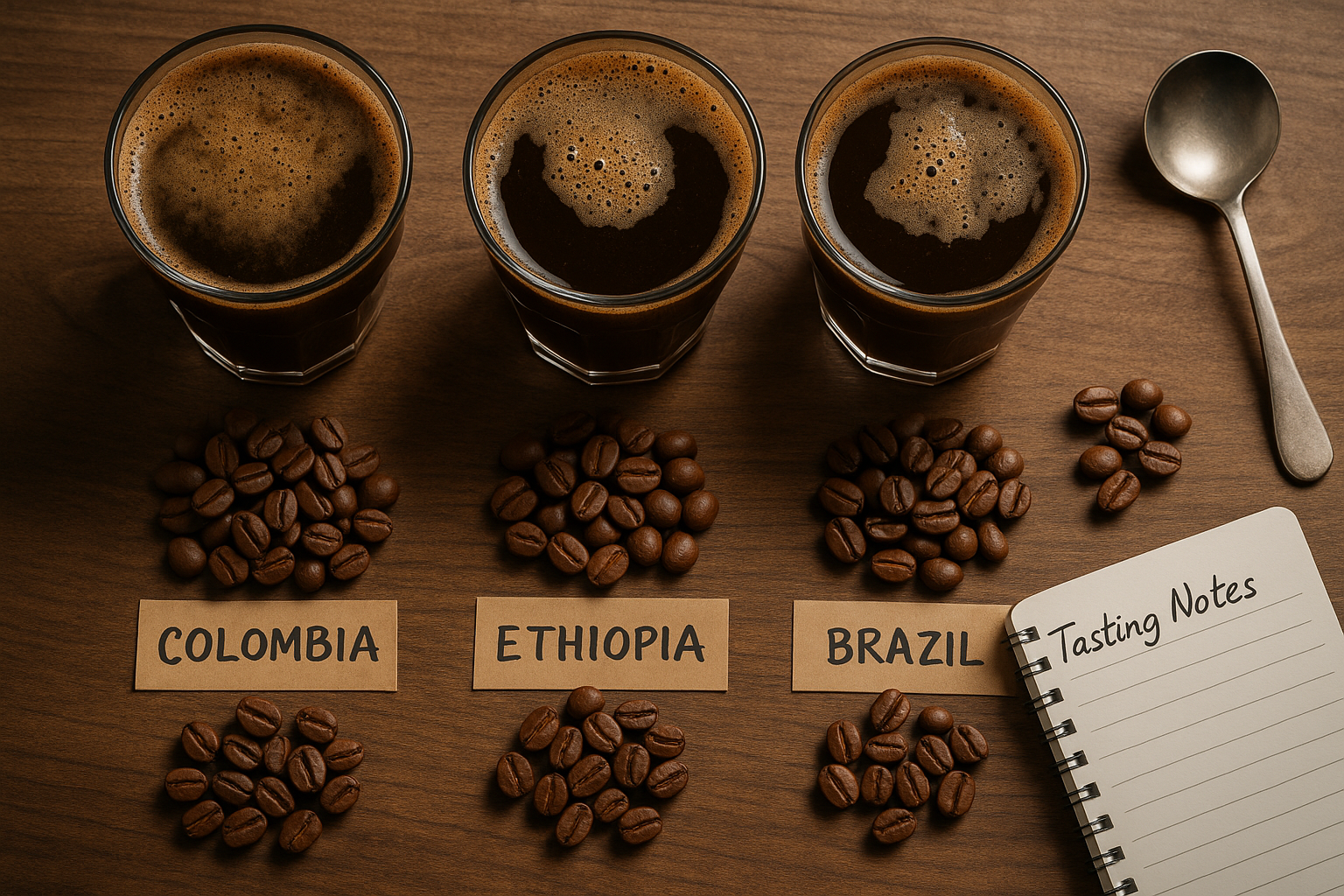Coffee isn’t just a morning ritual—it’s an invitation to travel the world through taste. Each region where coffee is grown produces beans with distinct characteristics, shaped by climate, soil, elevation, and processing methods.
In this article, we’ll explore how to compare coffees from different origins, so you can identify the unique traits of each and deepen your appreciation for global coffee diversity.
Why Coffee Origin Matters
The term “origin” refers to the geographical source of the coffee beans. Whether it’s a specific country, region, or farm, the origin profoundly influences the bean’s flavor profile.
Factors that affect coffee taste include:
- Altitude: Higher elevations produce denser beans with more acidity and complex flavors.
- Soil composition: Minerals in the soil affect the nutrients absorbed by coffee plants.
- Climate: Rainfall, sun exposure, and temperature shifts all influence growth and flavor.
- Processing method: Washed, natural, or honey processes bring out different flavor characteristics.
What You Need to Start Comparing Coffees
To compare coffees effectively, gather:
- 2 to 3 coffees from different countries (e.g., Ethiopia, Brazil, Colombia)
- Fresh whole beans
- Burr grinder
- Scale and timer
- French press, pour-over, or cupping setup
- Spoon for tasting
- Tasting notes sheet or notebook
- Optional: Coffee flavor wheel for reference
Try to buy beans with roast dates and origin information. Aim for light to medium roasts for a clearer sense of the origin’s flavor.
The Cupping Process for Comparison
Here’s a simplified cupping (tasting) routine to compare coffees side-by-side:
1. Grind the Coffee
Use a medium-coarse grind. Use the same ratio for all samples—typically 12g of coffee to 200ml of water.
Smell the dry aroma of each coffee. Are they nutty, floral, spicy?
2. Brew the Coffees
Place ground coffee in separate bowls or cups. Pour hot water (195–205°F or 90–96°C) over each sample evenly. Let steep for 4 minutes.
A crust will form on top.
3. Break the Crust
Using a spoon, gently stir and break the crust of each coffee while inhaling the aroma. This is often when the most vivid scents emerge.
4. Taste and Compare
Remove surface grounds with a spoon, then taste each coffee.
Slurp the coffee to aerate it and coat your palate. Take notes on:
- Acidity: Bright like citrus or mellow like apple?
- Body: Light, medium, or full?
- Sweetness: Subtle or prominent?
- Flavor Notes: Fruit, chocolate, spices?
- Finish: Short, lingering, clean, or dry?
Repeat as the coffee cools—flavors often become more pronounced.
Comparing Common Coffee Origins
Here’s a general guide to what you can expect from different origins:
| Origin | Common Flavor Notes | Body | Acidity |
|---|---|---|---|
| Ethiopia | Blueberry, jasmine, citrus | Light | Bright |
| Colombia | Caramel, red apple, cherry | Medium | Balanced |
| Brazil | Chocolate, peanut, brown sugar | Heavy | Low |
| Kenya | Grapefruit, currant, floral | Medium | Sharp |
| Guatemala | Cocoa, orange, cinnamon | Medium | Medium |
| Sumatra | Earthy, herbal, tobacco | Full | Low |
| Costa Rica | Honey, citrus, apricot | Medium | Crisp |
| Yemen | Spiced fruit, winey, complex | Light | Bright |
Use this table as a starting point, but remember that flavor can vary within each country.
Tips to Train Your Palate
- Taste coffees from single origins first. Avoid blends while you learn the differences.
- Compare only two or three coffees at a time. Too many can overwhelm your senses.
- Tasting journal: Write what you smell, taste, and feel.
- Taste different processing styles: Washed vs. natural can highlight very different notes.
- Pair with a flavor wheel: It can help you find the right words for what you’re tasting.
Recognizing Roast vs. Origin Flavors
Sometimes roast level masks the origin’s characteristics. Here’s how to distinguish:
- Light roasts: Let origin flavors shine—fruitiness, floral notes, bright acidity.
- Medium roasts: Balanced—some roast flavors, some origin clarity.
- Dark roasts: Roast flavors dominate—bitterness, smokiness, chocolatey tones.
If you’re comparing origins, opt for lighter roasts to truly detect origin nuances.
Discovering Your Preferences
Over time, you might notice patterns in what you enjoy. For example:
- If you like fruity, floral coffees → explore Ethiopia, Kenya, and Yemen.
- If you enjoy smooth, chocolatey brews → try Brazil, Colombia, or Guatemala.
- If earthy, herbal notes appeal to you → check out Indonesia and Sumatra.
Knowing your flavor preferences helps you choose better beans and even recommend coffees to others.
A Journey Worth Tasting
Comparing coffees from different origins is more than a taste test—it’s a cultural and sensory adventure. With each cup, you gain a better understanding of how geography, climate, and processing shape flavor.
So take the time to taste, compare, and enjoy the journey around the coffee-growing world—one sip at a time.
